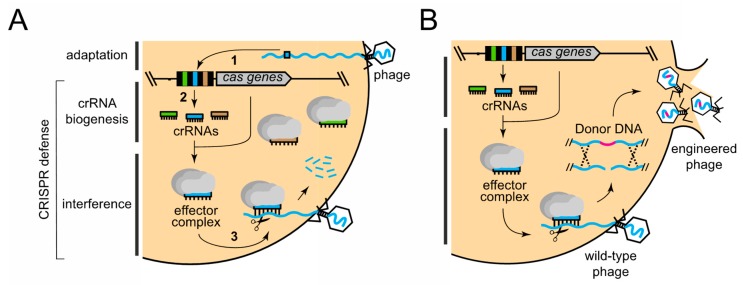Figure 1.
The CRISPR–Cas pathway and its application to phage genome editing. (A) The general three-step mechanism of CRISPR–Cas immunity consists of (1) adaptation; (2) crRNA biogenesis; and (3) interference. The latter two steps constitute CRISPR defense. Within the CRISPR locus, DNA repeats (black rectangles), spacers (colored rectangles), and cas genes (grey arrow) are shown. (B) The approach to using CRISPR defense for phage editing, wherein defense is used as a counter-selection mechanism to enrich for recombinant phages that have acquired mutations in the desired gene(s) from a donor DNA construct.

